The thoughts that comes to my mind about social broadcasting is people introducing their personal hobbies or exploring different areas while travelling or introducing nice and strange food or willing to expose their own personal lives to others. I could not understand what is the trend about going live through social media and how people are so excited about it. My theory about social broadcasting is if you are willing to expose yourself to the dangers of the world then by all means go ahead but I am comfortable without going live. When the class requires going live through social media, I was very skeptical and uncomfortable. It have been five years since I was active on Facebook and the first thought was do I have to?
My first experience of broadcasting was pretty interesting where I had the choice to showcase myself or the surroundings. It was uncomfortable at first but when people around are also doing the same thing, I felt that it was more bearable and less nerve-wrecking. I realised that broadcasting and social broadcasting are two separate things. Social broadcasting involves integrating people in my live feed where multiple people are broadcasting at the same time. When multiple live feeds are seen together and played in sync, it gives me a whole new perception and experience of social broadcasting.
The weekly readings and research topics are an eye opener where different artists have their own concept when creating their artworks. Through the research critiques, I found two of the research critiques very memorable. They are Bold3RRR by Jon Cates and The World’s Longest Collaborative Sentence by Douglas Davis.

Image from 4RTCR4X0RZ: Hacking Open Together:
New Media Art, Activism and Computer Counter Cultures: http://gl1tch.us/4RTCR4X0RZ.html
Bold3RRR was a new perception of glitch for me where it reflects the world we are in. I have never thought of it before and how we view performance is no longer going to the actual place but bring it to the viewer. The arrangement of our desktop also show our personality and tells a story of a person. The playfulness and whimsical layout of jonCates’ work shows how passionate he is towards glitch aesthetics.
The World’s Longest Collaborative Sentence revealed to me a revelation where chaos and order, an oxymoron could be incorporated together. The idea was as simple as asking people to contribute words but having to implement it is complicated. Yet, it brought my people of different countries together without having to deal with social problems such as racism. This gives me an idea of how anyone could be a part of an artwork and collaborating together. Nonsensical it maybe but yet it shows no matter which era you are in people are still fascinated by it. The two artworks are different yet the same where the artists use ordered chaos as their basis.
After experiencing multiple social broadcasting through the use of Facebook live and OBS, I felt that there are still many areas that I could explore with. My perception of doing social broadcasting have altered a little. In the beginning I was not for social broadcasting but after researching about the different areas and the different types of explorations that have been explored I felt that social broadcasting is quite meaningful.
Even in social broadcasting, there are pros and cons. The pros are people could connect together without binding themselves to their geographical locations, it is free for all just like how the VideoFreex created their own show with a portable camera and creating collaborative work with the world.
“…create a performance place with no geographical boundaries…”
Kit Galloway and Sherrie Rabinowitz
The cons are people are more easily exposed to dangers where our datas are everywhere on the web and freely showing people our daily lives. Personally I love to watch crime shows such as criminal minds and CSI where people are killed or kidnapped due to webcam or technological devices. I became more concern with going live or even sharing via social media. However I feel that social broadcasting have to be done in moderation for people to still be open with it.
Personally I am interested in creating a web-based installation or probably performance art where the world could be connected together. I felt that the use of glitch art reflects how the world is now: messed up, waging wars, break down of technology and even the words we say are no longer censored but yet at the same time there are still some beauty in it.
“…to be lost in proversation and caught amidst in the sense of wonder and surprise, this is glitch unravel in the sense of something wonderful is happening, these are glitch operations, malfunctions and they have gone wrong, so beautifully wrong…”
jonCates’ video Bold3RRR
I was thinking of how I could incorporate glitch with web-based collaboration and also performance of the third space. It would be interesting to see how our facial expressions are when we type on our computer and how words can be translated to gibberish where it can be another type of glitch. We cannot speak properly shows how messed up our minds are.
Last week broadcasting was an interesting experience. I felt that the discussion before going around to explore broadcasting was a way for us to interact and learn different kinds of methodology used.
During the broadcasting, I still had some technical problems where some open areas do not have connection to the school WiFi but I would interpret as a kind of glitch art where things still goes wrong beautifully surprisingly. Instead of communicating with people via the live feed I communicated with people face to face. It was another way of interaction which made the whole experience different too since we are so used to communicate via a device.
https://thirdspacenetwork.com/cross-stream-joan-hannah/
First video experience:
Posted by Hannah Kwah on Thursday, 21 September 2017
Second video experience:
Posted by Hannah Kwah on Thursday, 21 September 2017
The pros is the experience of creating a third space together and making your own kind of art. The cons is the internet connection and not being able to sync the phone and computer at the same time.
Overall, I learnt many different aspects of Internet art from social broadcasting to third space to collective narrative to desktop-en-scene to super participation. I felt that the whole experience was interesting despite the fear behind it. It may perplex someone about the art created through these medium but on the hand, some others may appreciate it. As for me I am super inspired and amazed by all the different works I have come across and thinking of weird ideas as to how I can incorporate it in my future artwork.
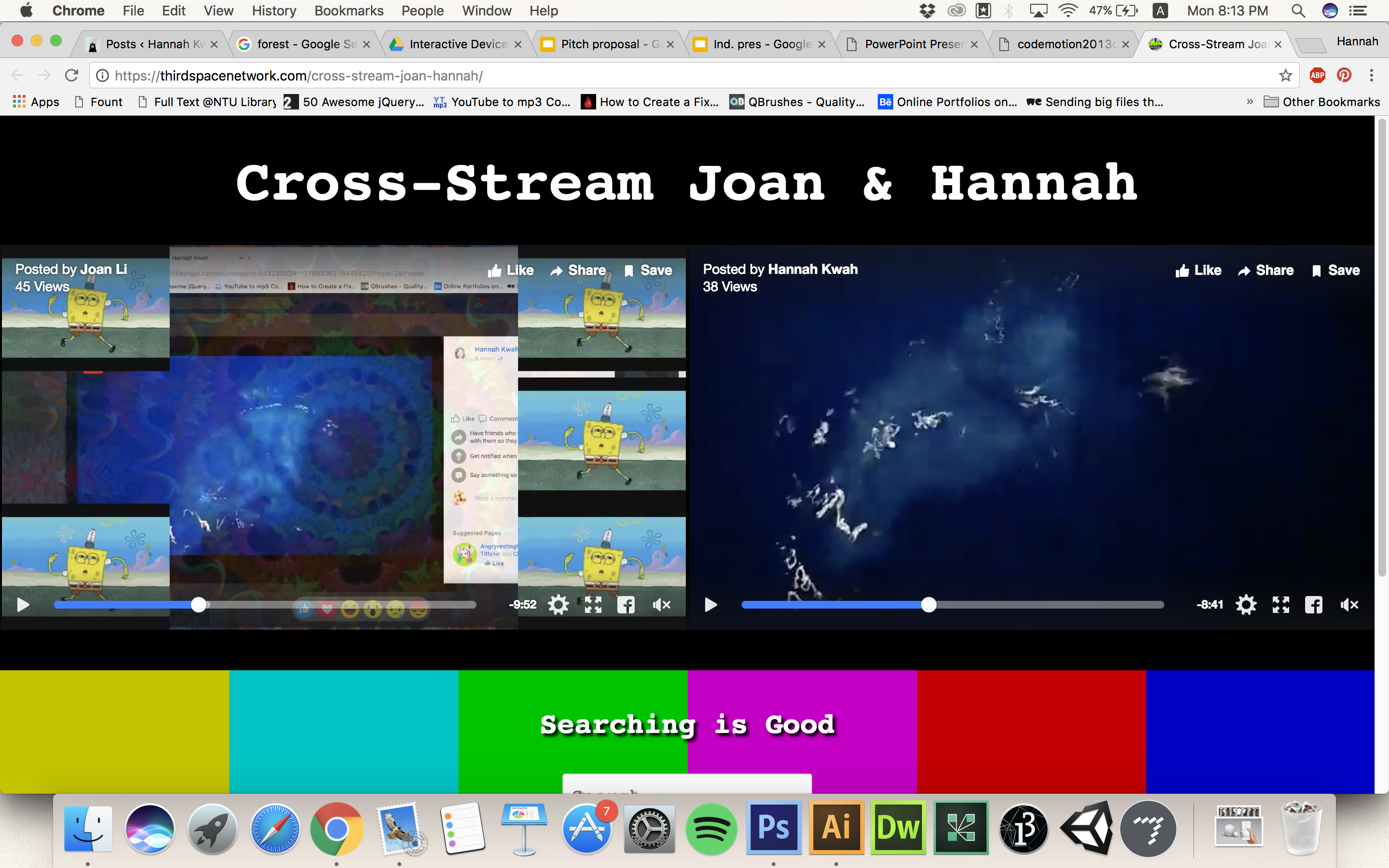


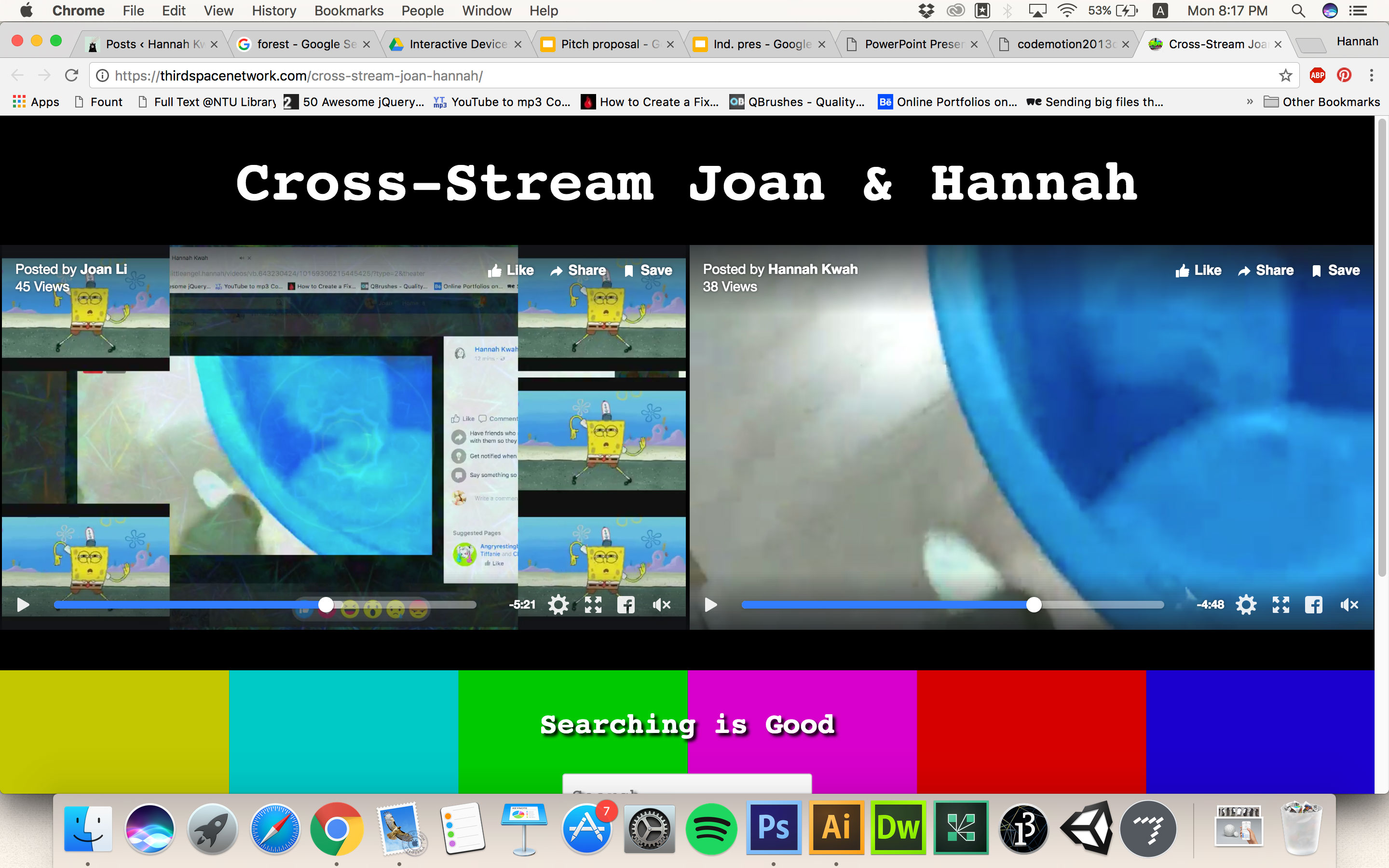

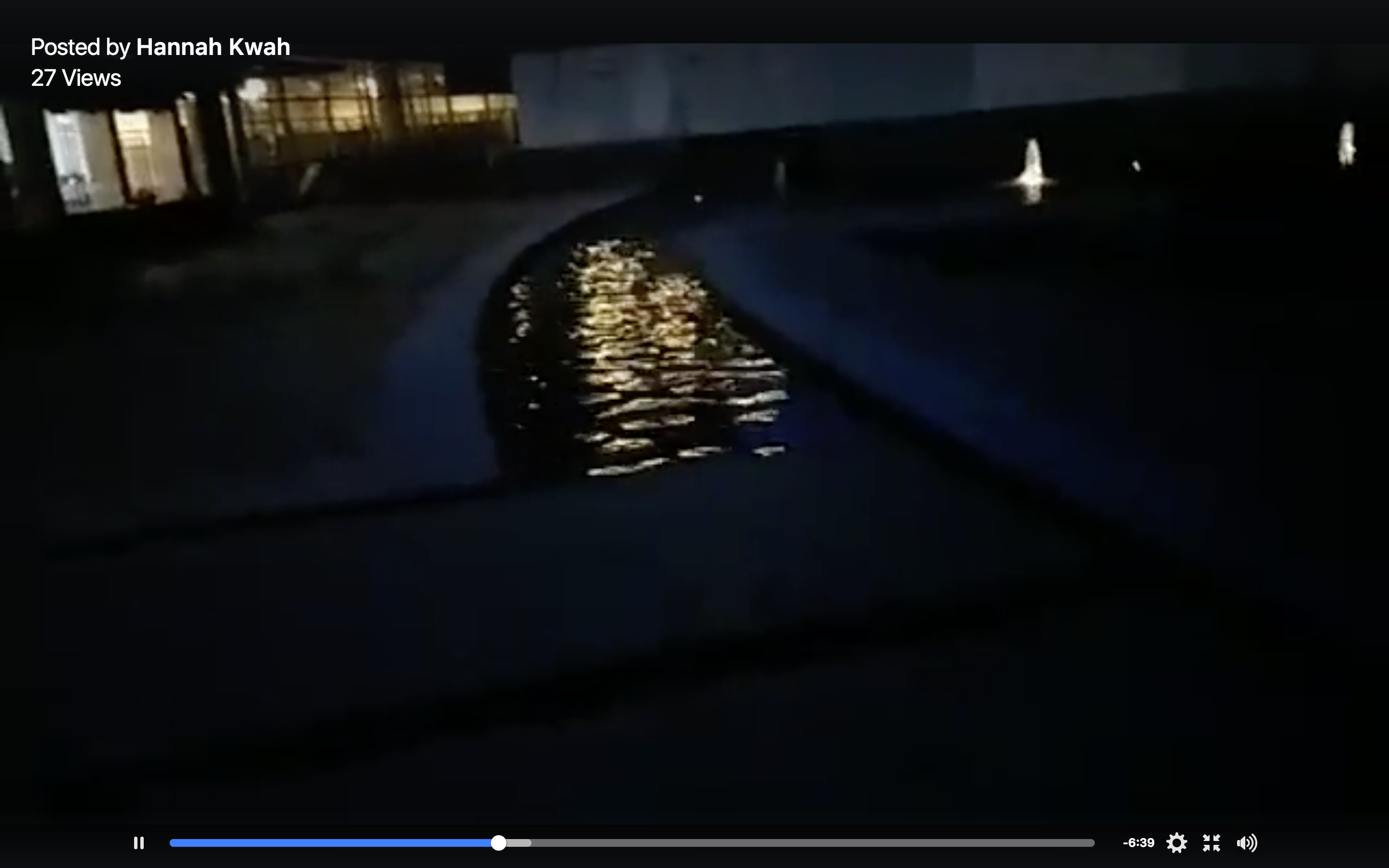
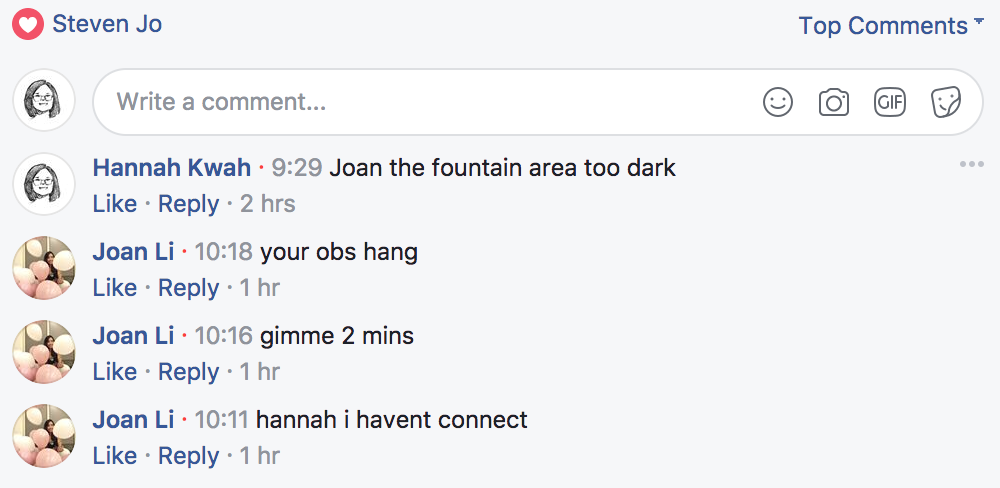
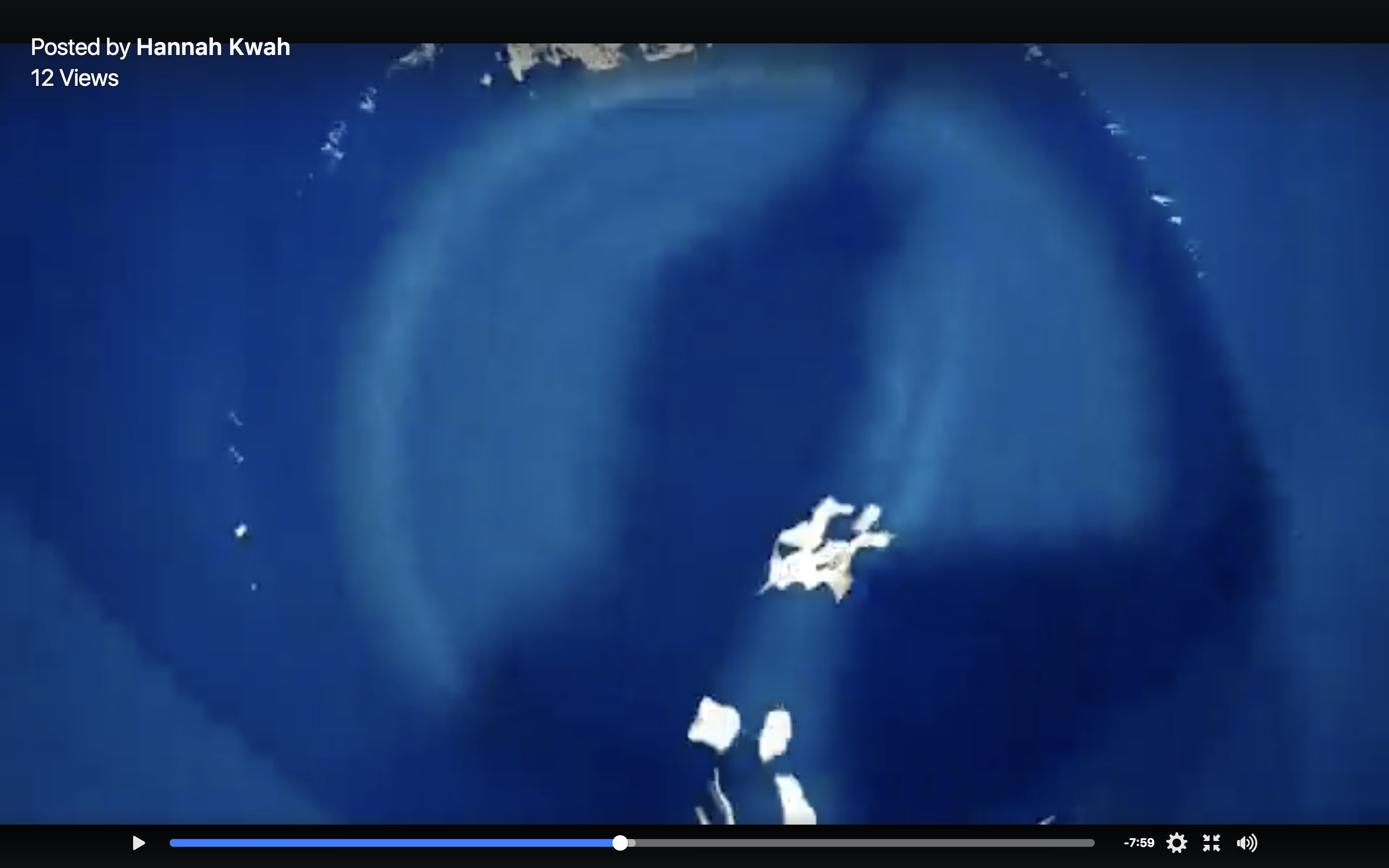

October 12, 2017 at 12:09 pm
Hannah, I thoroughly enjoyed your Hyperessay and was very impressed with how honest you were describing your thoughts and feelings about live broadcasting via social media. Yes, there is something risky about putting your live broadcast out for the world, or at least your friends to see, but at the same time, all performance is risky and unsettling, which is the nature of performing.
I thought this quote of yours was particularly interesting:
This is a very astute comment. In traditional performance that takes place in a theater, the audiences comes to the show. But on the Internet, the show comes to the audience. That is a profound difference, as you point out. This would be the same as radio or television, the ability to receive, in your home, or personal space, a live performance or event. On the Internet, performance comes right to your desktop, or even your phone, you can carry it around with you. When you think about it, this is a miraculous idea!
I also thought that your incorporation of the imperfections of broadcasting was well thought through, clearly, like any medium, you have to incorporate, rather than fight, the characteristic that are specific to the medium.
One comment: when you use a quote such as the one by Kit Galloway and Sherrie Rabinowitz, which referred to creating “a performance with no geographical boundaries,” you should refer to the quote so that it directly supports your argument. This is true of all references whether they be images, video, screenshots or quotations.
Excellent work on your Hyperessay.